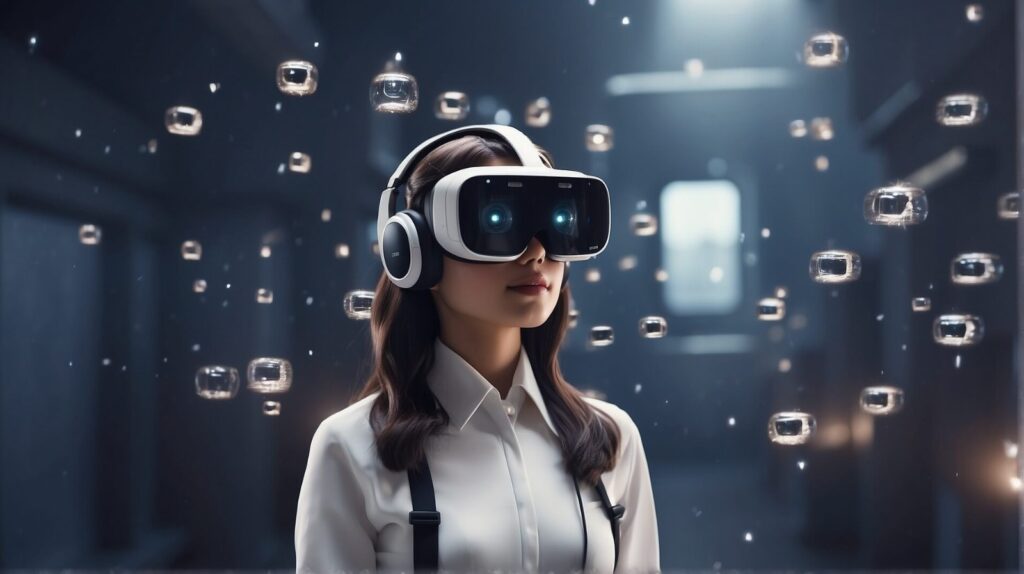The world of Virtual Reality (VR) has come a long way, offering immersive experiences that were once limited to science fiction. Behind the scenes, Artificial Intelligence (AI) plays a crucial role in transforming the VR landscape, making content creation more dynamic, accessible, and innovative. In this article, we’ll explore how AI supports VR content creation, from improving design to streamlining development processes.
The Role of AI in VR Content Creation
AI is revolutionizing the way content for virtual worlds is designed, developed, and optimized. VR experiences depend heavily on visuals, interactivity, and the smooth integration of various elements. AI algorithms help automate many of the complex tasks involved in VR content creation, ensuring a more efficient workflow and a higher-quality end product.
One of the key benefits of using AI in VR content creation is the ability to quickly generate realistic and detailed 3D models. With the help of AI-powered tools, designers can create lifelike environments, objects, and avatars with much less manual input. For example, AI algorithms can analyze real-world images and transform them into high-resolution 3D models that are ready to be used in virtual spaces. This not only speeds up the design process but also helps create more immersive and engaging experiences.
AI-Powered Tools for VR Content Creation
Several AI-powered tools are available to streamline the VR content creation process. These tools can assist with everything from generating realistic textures and lighting to optimizing interactive elements. One notable example is AI-driven image generators that can create high-quality visuals in a fraction of the time it would take a human artist. These tools are particularly useful for creating assets like backgrounds, textures, and props that enhance the realism of VR environments.
For instance, tools like AI-based image generators can turn basic sketches into high-resolution artwork in seconds. This is beneficial for VR developers who need to create numerous assets quickly to build vast, detailed virtual worlds. And if you’re looking for a best AI image generator free, many platforms provide these services without a price tag, making it accessible to smaller studios and independent creators.
Enhancing Interactivity and User Experience
Beyond visual design, AI also plays a critical role in enhancing interactivity within virtual reality experiences. AI algorithms can analyze user actions in real time and adjust the virtual environment accordingly, offering a more personalized and responsive experience. For example, AI can track a user’s movement and adjust the VR scene to ensure smooth navigation. Additionally, AI-powered avatars can interact with users in a way that feels natural, making VR simulations more immersive.
Moreover, machine learning algorithms enable VR developers to create more sophisticated NPCs (non-playable characters) that learn from user interactions and adapt their behavior over time. This enhances the overall experience, especially in complex VR games or simulations that require realistic social interactions and behavioral patterns.
Streamlining the Development Process
The development process for VR content is intricate and time-consuming, often requiring teams of developers to work on various aspects simultaneously. AI helps streamline this process by automating tasks such as asset creation, scene optimization, and user testing. This allows developers to focus more on the creative aspects of VR design, while AI handles the repetitive or technical tasks.
AI can also help in the quality assurance phase of VR content creation by automatically detecting and fixing bugs or glitches within the virtual environment. This ensures that the VR experience is seamless and free from frustrating technical issues, which can otherwise break the immersion.
Future Trends in AI and VR Integration
Looking ahead, the integration of AI and VR is expected to become even more sophisticated. As AI continues to evolve, we can expect smarter algorithms that create even more realistic and responsive VR content. The use of deep learning and neural networks will likely lead to more intuitive virtual environments that adapt to the user’s preferences, actions, and behaviors in real time.
Furthermore, advancements in AI could make VR content creation more accessible to a broader audience. With AI tools becoming more user-friendly and affordable, even individuals without extensive technical expertise will be able to create and experience high-quality VR environments.
Conclusion
AI is transforming the way we create and experience virtual reality, making it faster, more accessible, and far more engaging. By automating time-consuming tasks and enhancing interactivity, AI supports VR content creation in ways that were previously unimaginable. As both technologies continue to advance, we can expect even more innovative and immersive VR experiences that blur the line between the real and the virtual. Whether you’re a developer looking to streamline your workflow or a creator interested in building your own VR world, AI is a powerful ally in the world of virtual reality.


